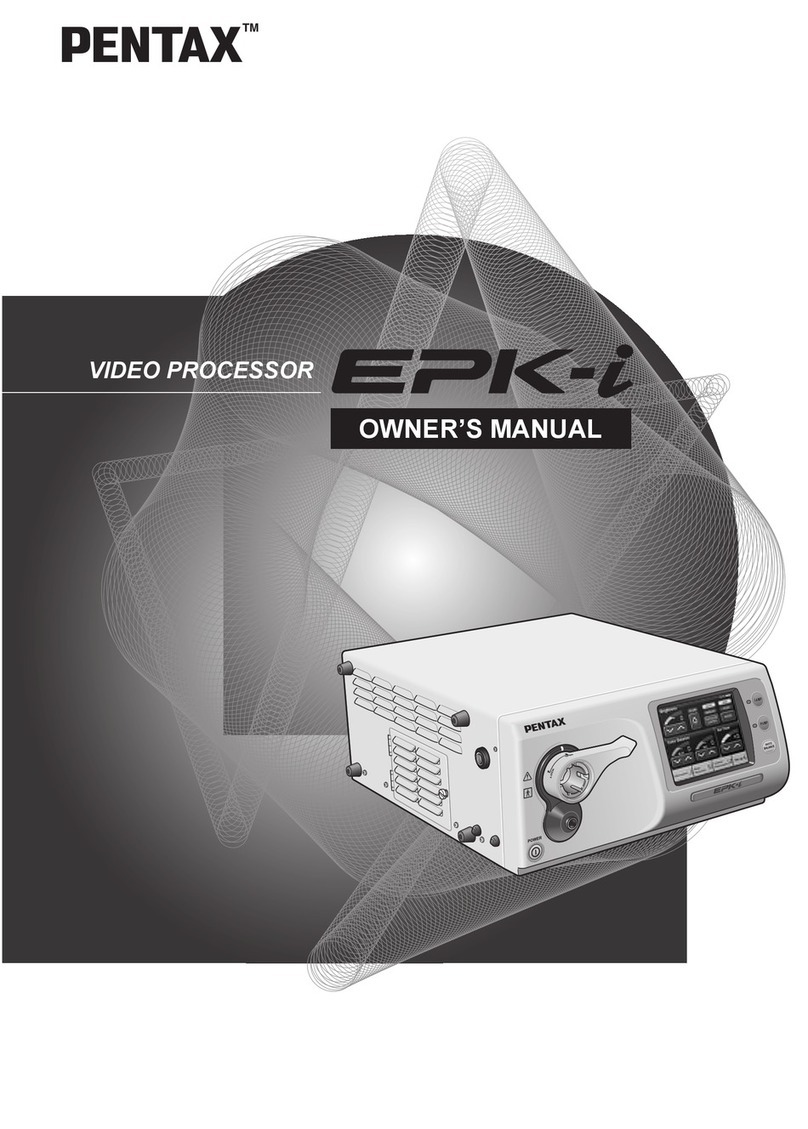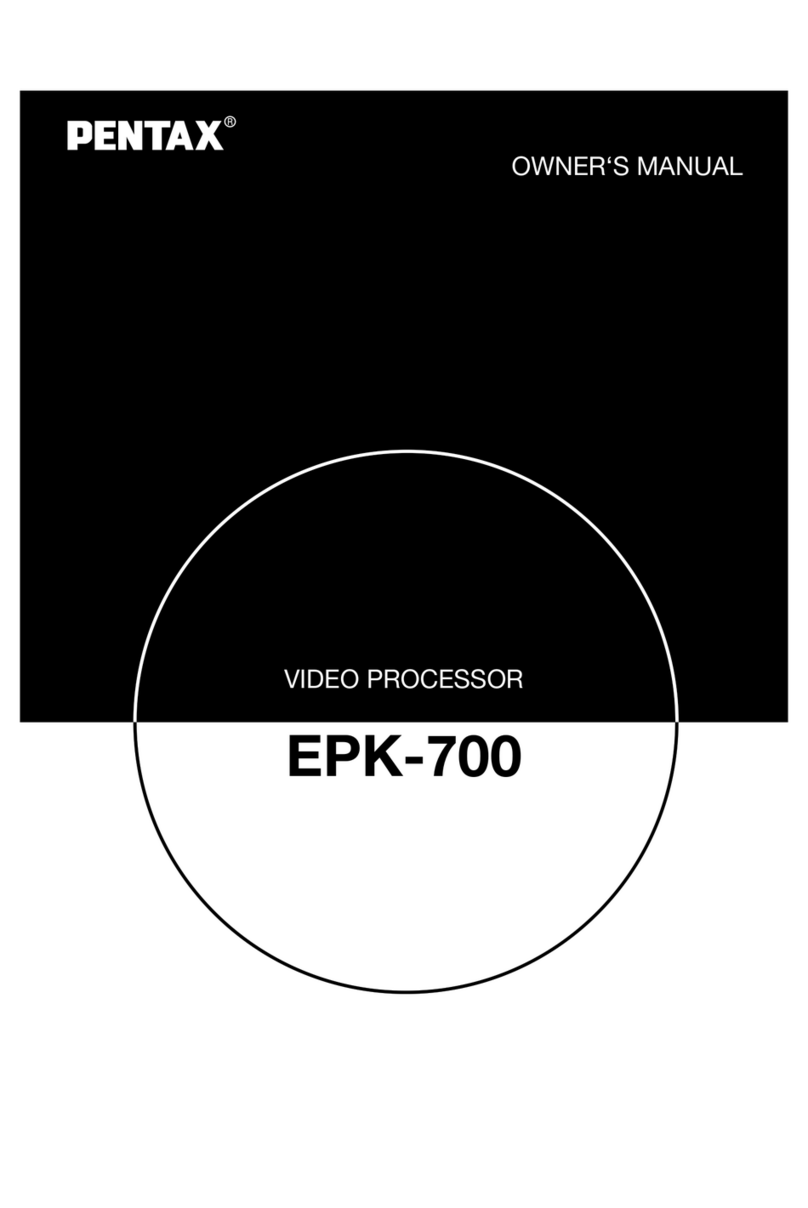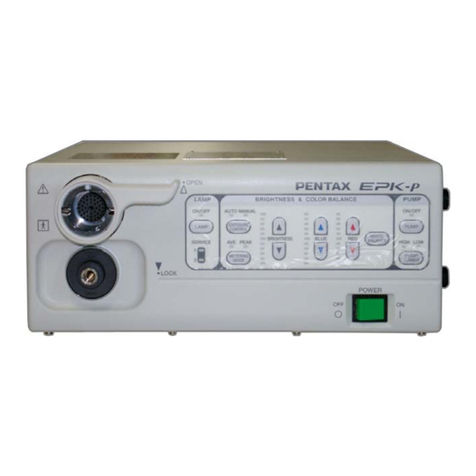CONTENTS
1SAFETY PRECAUTIONS...............................................................................................................................................................................1
2SPECIFICATIONS...........................................................................................................................................................................................7
3NOMENCLATURE, CONTROLS AND FUNCTIONS .................................................................................................................................8
3-1 EPK-700 VIDEO PROCESSOR .........................................................................................................................................................8
(1) MAIN BODY ............................................................................................................................................................................8
(2) FRONT PANEL ........................................................................................................................................................................9
(3) REAR PANEL.........................................................................................................................................................................10
3-2 WATER BOTTLE ASSEMBLY ......................................................................................................................................................11
3-3 KEYBOARD .....................................................................................................................................................................................12
3-4 MONITOR DISPLAY SCREEN ......................................................................................................................................................13
(1) NORMAL................................................................................................................................................................................13
(2) FREEZE (SUB SCREEN DISPLAY).....................................................................................................................................13
4PREPARATION AND SAFETY CHECK.....................................................................................................................................................14
4-1 PREPARATION................................................................................................................................................................................14
(1) SETTING UP THE EPK-700..................................................................................................................................................14
(2) CONNECTING THE WATER BOTTLE...............................................................................................................................14
(3) CONNECTING THE ENDOSCOPE......................................................................................................................................15
(4) CONNECTING THE PERIPHERAL EQUIPMENT .............................................................................................................15
4-2 PRE-USE SAFETY CHECKLIST....................................................................................................................................................16
5OPERATION..................................................................................................................................................................................................18
5-1 FUNCTION KEY INDEXES............................................................................................................................................................18
5-2 SETTING THE DATE AND CLOCK ..............................................................................................................................................18
5-3 SECOND ADJUSTMENT ...............................................................................................................................................................19
5-4 ENTERING SCREEN (PATIENT) DATA.......................................................................................................................................19
(1) CLEARING SCREEN INFORMATION................................................................................................................................19
(2) ENTERING SCREEN INFORMATION................................................................................................................................19
(3) EDITING/CORRECTING SCREEN INFORMATION .........................................................................................................20
5-5 PROCESSOR FUNCTIONS.............................................................................................................................................................21
(1) LAMP ......................................................................................................................................................................................21
(2) BRIGHTNESS.........................................................................................................................................................................21
(3) COLOR BALANCE................................................................................................................................................................22
(4) XLUM (TRANSILLUMINATION) .......................................................................................................................................23
(5) AIR PUMP...............................................................................................................................................................................23
(6) COPY.......................................................................................................................................................................................23
(7) VCR .........................................................................................................................................................................................23
(8) ENHANCE ..............................................................................................................................................................................23
(9) COLOR BAR...........................................................................................................................................................................24
(10) SCREEN CHARACTERS ON/OFF .......................................................................................................................................24
(11) POINTER ................................................................................................................................................................................24
(12) FREEZE IMAGE CONTROL MODE....................................................................................................................................24
(13) STOPWATCH.........................................................................................................................................................................24
(14) COLOR ADJUSTMENT.........................................................................................................................................................25
(15) SCOPE BUTTONS .................................................................................................................................................................26
(16) CONTROL OF VIDEO PROCESSOR FUNCTION FROM THE ENDOSCOPE CONTROL BOTTONS.........................26
6MAINTENANCE ...........................................................................................................................................................................................27
6-1 AFTER EACH PROCEDURE..........................................................................................................................................................27
6-2 WATER BOTTLE CLEANING .......................................................................................................................................................27
(1) CLEANING.............................................................................................................................................................................27
(2) STERILIZATION....................................................................................................................................................................28
(2-1) STEAM STERILIZATION..........................................................................................................................................28
(2-2) ETO STERILIZATION ...............................................................................................................................................28
(3) CARE DURING STORAGE...................................................................................................................................................28
6-3 STORAGE.........................................................................................................................................................................................29
6-4 CHANGING THE LAMP .................................................................................................................................................................29
6-5 RESETING THE BREAKERS .........................................................................................................................................................29
7TROUBLE-SHOOTING GUIDE...................................................................................................................................................................30
8FUNCTION SUMMARY DIAGRAM


































